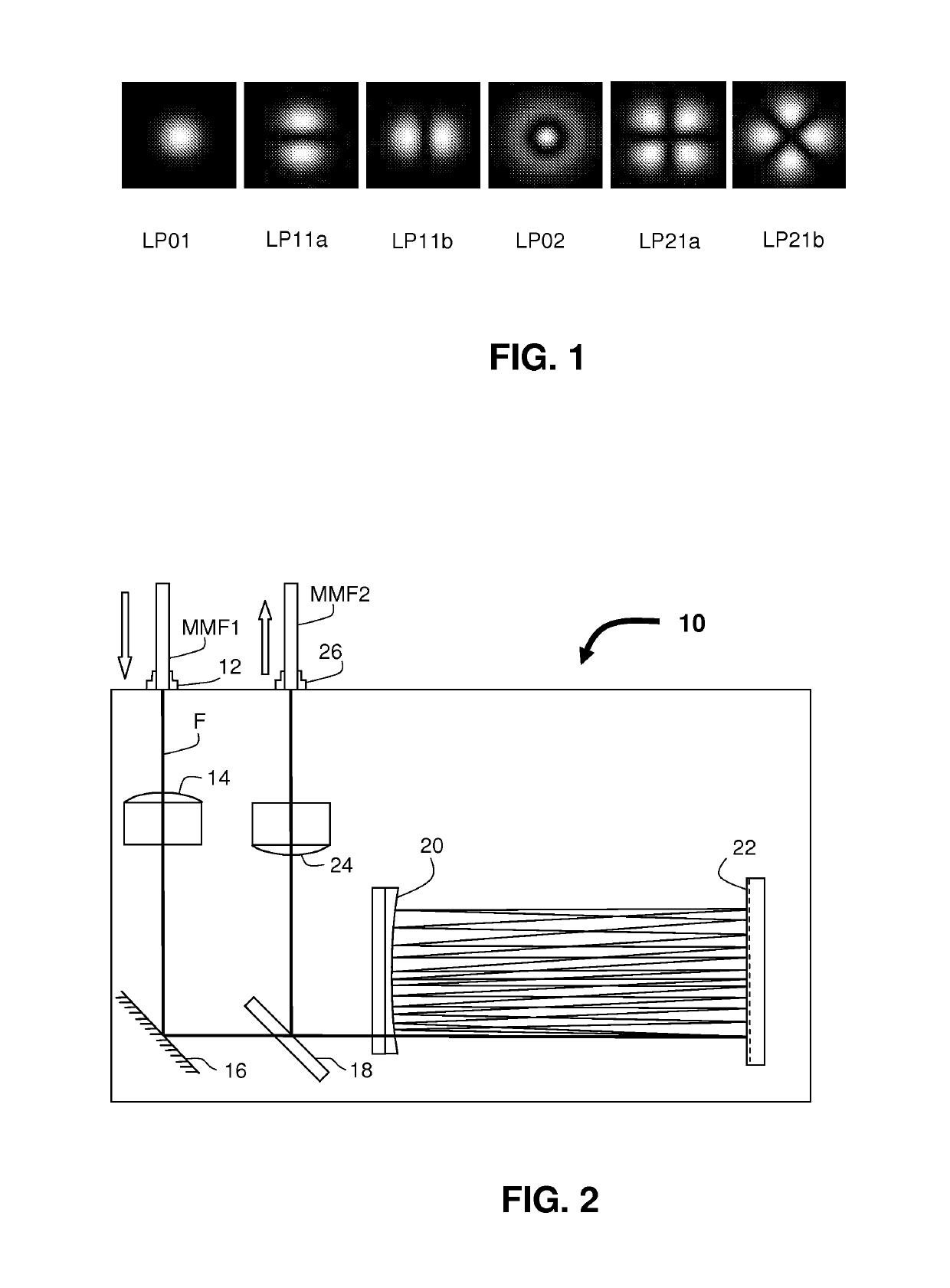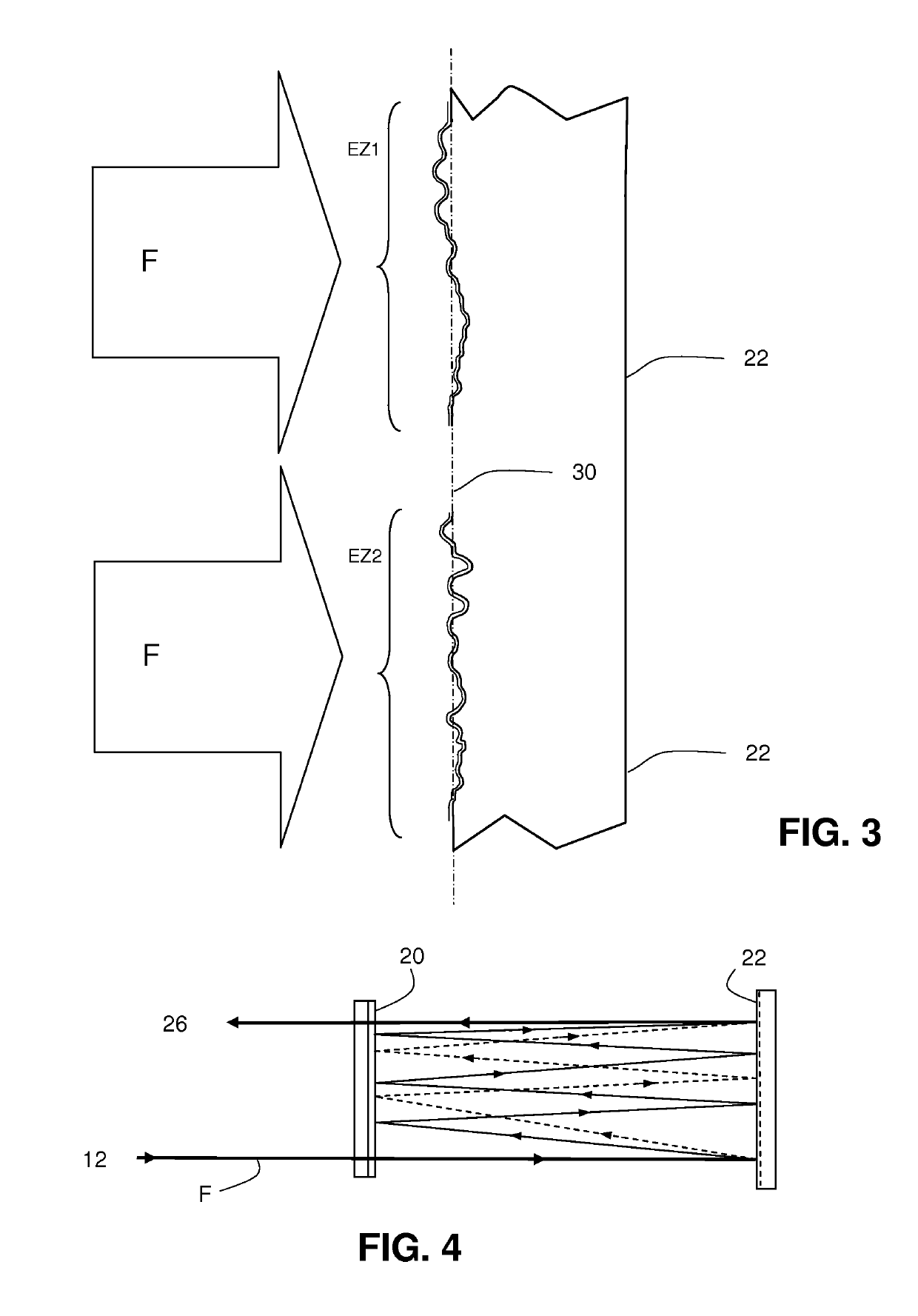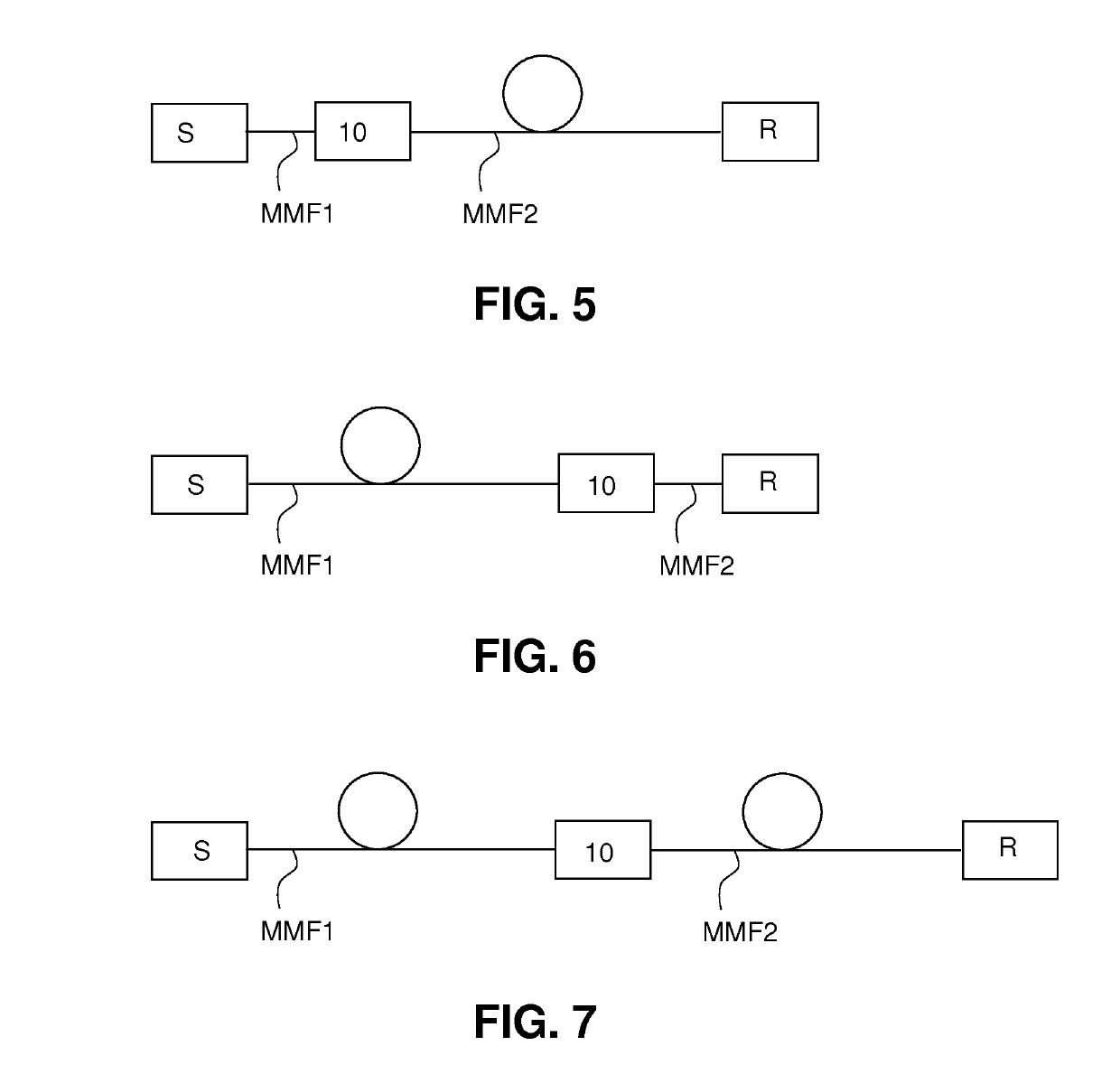Multimode optical fiber communication device comprising a component for modal dispersion compensation
a multi-mode optical fiber and compensation technology, applied in the field of optical fiber communication, can solve the problems of modal dispersion, varies in the propagation speed of light, and drawbacks of multi-mode fibers, and achieve the effect of increasing the speed
- Summary
- Abstract
- Description
- Claims
- Application Information
AI Technical Summary
Benefits of technology
Problems solved by technology
Method used
Image
Examples
Embodiment Construction
[0036]The spatial profile modification optical component that will be used is based upon components used in the prior art to modify the spatial profile of a coherent light beam.
[0037]For the record, the spatial profile of a light beam is an electric field distribution profile in a beam section transverse to the axis of propagation. This is a profile of complex amplitudes of an electric field that can be represented at any point of the section by one intensity and one phase. For example, the intensity profile would be Gaussian in the case of a beam transmitted by a single-mode fiber energized according to the fundamental mode. The profile is, of course, more complex in the case of a multimode beam and it can be broken down into specific profiles corresponding to each mode.
[0038]The modes of propagation in a multimode fiber are commonly reported in the literature and often designated by letters and numbers that indicate the nature of the mode and the order thereof in two dimensions. T...
PUM
 Login to View More
Login to View More Abstract
Description
Claims
Application Information
 Login to View More
Login to View More - R&D
- Intellectual Property
- Life Sciences
- Materials
- Tech Scout
- Unparalleled Data Quality
- Higher Quality Content
- 60% Fewer Hallucinations
Browse by: Latest US Patents, China's latest patents, Technical Efficacy Thesaurus, Application Domain, Technology Topic, Popular Technical Reports.
© 2025 PatSnap. All rights reserved.Legal|Privacy policy|Modern Slavery Act Transparency Statement|Sitemap|About US| Contact US: help@patsnap.com



